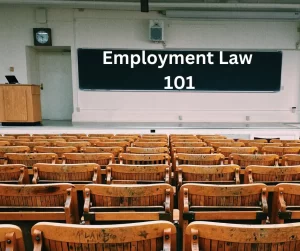
Under Washington State laws, what is a “defendant” within the context of civil lawsuits? Here’s my point of view.
(IMPORTANT: This article is for informational purposes only and is based upon my point of view. Due to the rapidly changing nature of the law, we make no warranty or guarantee concerning the accuracy or reliability of the content in this article. No content on this site, regardless of date, should ever be used as a substitute for direct legal advice from your attorney. Please review our Disclaimer | Terms of Use | Privacy Policy before proceeding.)
Introduction: The Defendant
In the context of civil lawsuits, the term “defendant” plays an essential role, embodying an individual or entity faced with legal action. This key figure is central to the adversarial nature of the legal system, where parties with conflicting interests present evidence and arguments before a court. In this blog post, we will delve into the definition and significance of a defendant in the context of Washington State civil lawsuits. NOTE: For purposes of employment law, employment-discrimination lawsuits are considered civil lawsuits.
Definition of Defendant
In civil litigation, a defendant refers to the party against whom a legal action is initiated. This legal term encompasses individuals, organizations, businesses (e.g., sole proprietorships, partnerships, etc.), corporations, government entities, or any other legal entity that finds itself at the receiving end of a civil lawsuit.
For purposes of Washington State employment-discrimination law, defendants are usually employers, and the Washington Law Against Discrimination defines the term as follows:
‘Employer‘ includes any person acting in the interest of an employer, directly or indirectly, who employs eight or more persons, and does not include any religious or sectarian organization not organized for private profit.
RCW 49.60.040(11) (hyperlinks and emphasis added).
The civil-litigation defendant is tasked with responding to the claims made by the plaintiff, the party that initiates the legal proceedings.
Initiation of Civil Lawsuits
In Washington State, plaintiff’s who are convinced of having experienced harm or injustice commonly initiate civil lawsuits by both filing with the court and serving on the defendant a summons and complaint.
the summons
The summons is an instrument that appraises defendants of civil legal proceedings against them and provides notice of the opportunity to appear and be heard.
the complaint
The complaint delineates the plaintiff’s grievances and establishes the legal foundation for seeking redress.
Role and Responsibilities of the Defendant (Civil Litigation)
Upon receiving the summons and complaint, the defendant must respond within a specified period, typically outlined in the court documents. This response is a critical phase in the legal process and typically involves the defendant either admitting or denying the allegations presented by the plaintiff. The defendant may also present counterclaims, asserting that the plaintiff is responsible for the harm or seeking legal remedies related to the same incident; and if there are codefendants, each may present crossclaims against the other.
right to legal representation
Throughout the litigation process, the defendant has the right to legal representation. Attorneys play a pivotal role in crafting a defense strategy, gathering evidence, and presenting arguments in favor of the defendant’s position. This legal representation is crucial in navigating the complexities of civil law and ensuring a fair and just resolution.
Conclusion
In civil lawsuits, the defendant is a cornerstone of the legal process, representing the party against whom legal action is taken. Understanding the role and responsibilities of a defendant is vital for comprehending the dynamics of civil litigation. As the legal system strives for justice, the defendant’s right to a fair defense ensures a balanced and impartial resolution to disputes within the framework of American civil law.
Read Our Related Articles
We invite you to read more of our articles related to this topic:
» Employment Law 101: Alternative Dispute Resolution
» Employment Law 101: Definition of Pleading
» Employment Law 101: Depositions
» Employment Law 101: Discovery (WA State)
» Employment Law 101: Legal Theory
» Employment Law 101: Mediation
» Employment Law 101: Remedies
» Employment Law 101: Statute of Limitations
» Employment Law 101: Summary Judgment (WA State)
» Employment Law 101: The Complaint
» Employment Law 101: The Plaintiff
» Employment Law 101: The Summons
LEARN MORE
If you would like to learn more, then consider contacting an experienced attorney to discuss your case. This article is not offered as legal advice and will not establish an attorney-client relationship with Law Office of Gregory A. Williams or the author of this article; please refer to our Disclaimer | Terms of Use | Privacy Policy for more information.
–gw

